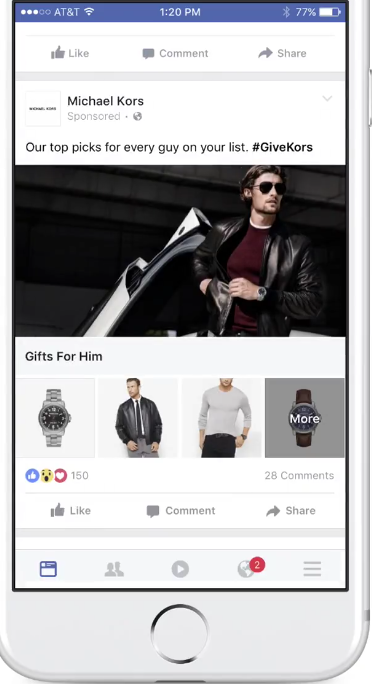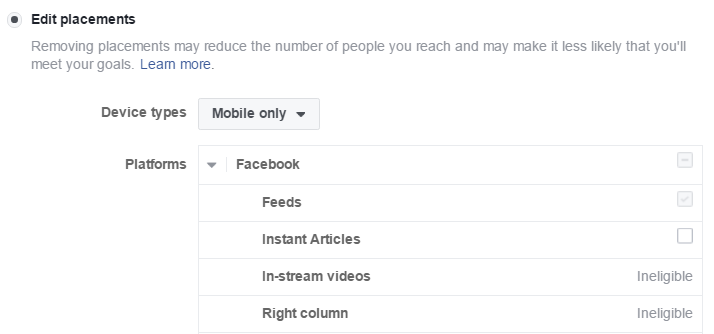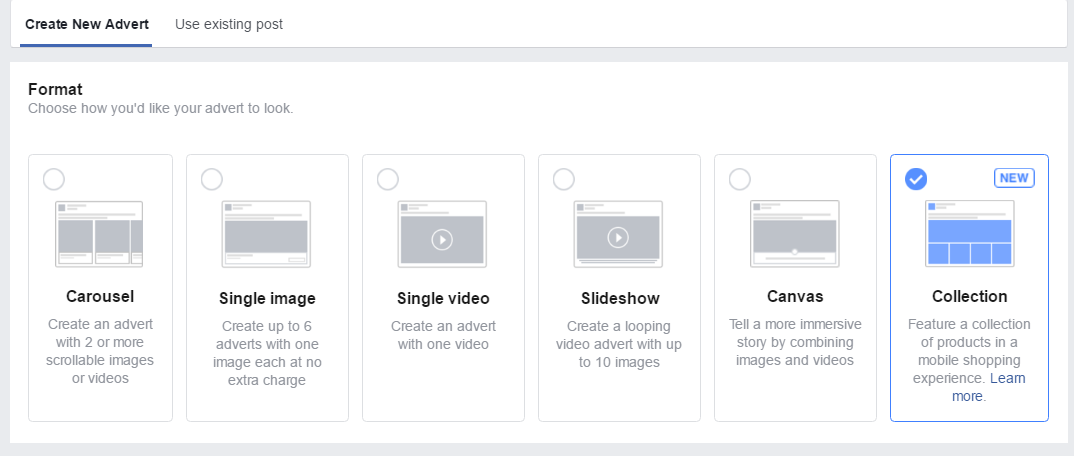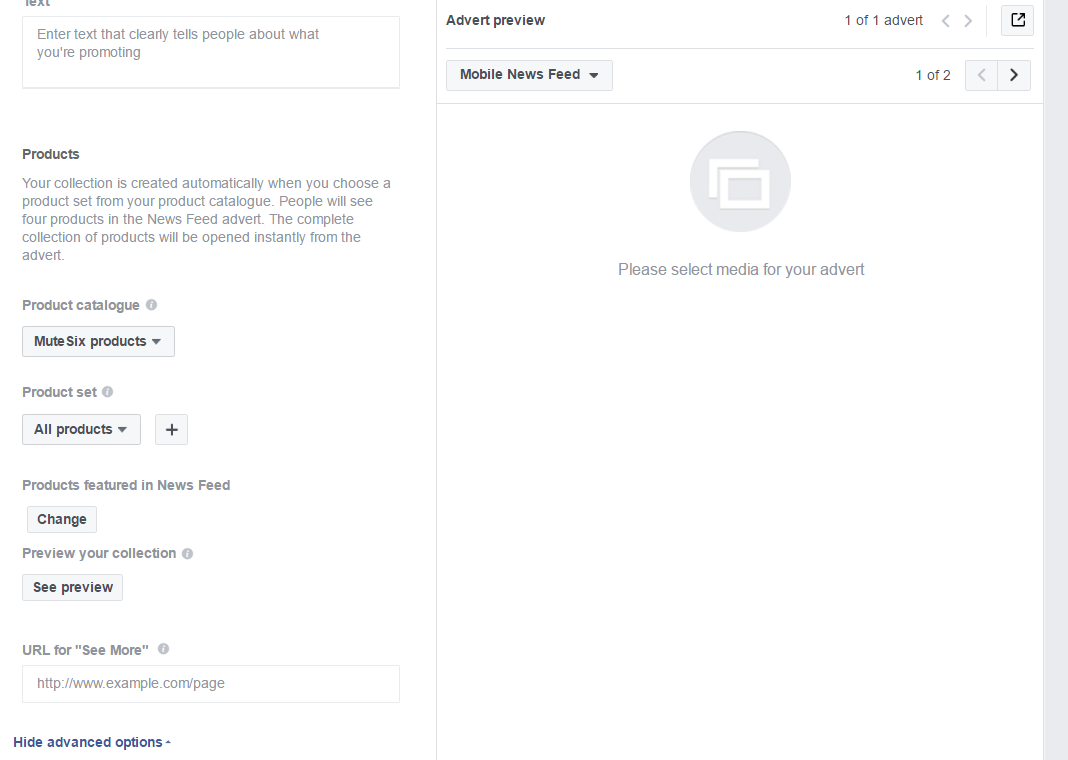This month, Facebook rolled out its new “collection” ad unit, which is set to make every e-commerce brand very, very happy.
In this article you’ll learn:
- what collection ads are,
- how you should be using them, and
- how to set up your first collection ad.
What is the Facebook collection ad format?
The new collection ad allows brands to pair a video or image with up to four related products. A visitor can view a product item and if clicked, will be sent to the product description and then to the product page within a single newsfeed experience.

It works like this:
Collection ad: A user views your ad on their newsfeed.
Product catalog: If a user clicks on any of the related products, they can learn more about the item or they can scroll through your product catalog on Facebook.
Product page (off Facebook): If a user then selects to view a product, they are directed to your website or app where they are given the action to buy that item.
Two thirds of the collection ad experience is on Facebook, ensuring a fast and smooth experience for shoppers.
You can serve up to 50 products in total per collection ad without the user having to leave Facebook, and send traffic to either your mobile app store or website. You’re able to choose the four initial products that are shown on your ad, but the rest of the products are picked using an algorithm based on the user’s preferences.
Collection is all about the video
You can lead with either a video or image when creating your first collection ad, but I strongly suggest you stick to video for two reasons.
1. You’ll already be using images: The lower part of your ad already contains product images. Having a video above it breaks your ad into two segments, ensuring more eye attention on your ads.
2. All the attention is on video: Facebook is starting to become a video orientated ad platform. Video is where all the engagement is at right now.
Use the video to draw the user’s attention through a creative short video, and carefully choose four products that relate to the video.
Growth hacking tip: You don’t have use product images under your video; you can also provide users with free opt-ins to grow your list. It’s a smart idea to test collection ads to see if you can drive your leads for a cheaper CPA than creating a traffic objective or a lead generation ad.
How to set up a collection ad
To create your first collection ad you will need to set up a product catalog. You can learn how to set one up by reading the following article: Step-by-Step Action Plan to Setting up Dynamic Product Ads on Facebook.
If you already have a product catalog, you can choose to set up a collection ad by using either the conversion or traffic objective.
At the ad set level, choose only to target mobile devices and select news feed:

Collection ads are only being shown on mobile devices.
When you get to the ad level and when selecting format, you’ll now see the new format collection ad:

At the page and links section you’ll be able to choose your product catalog and the product sets you’d like to show:

This is where you’ll be able to select the four items you’d like to appear within your collection ad.
The collection ad format does work with the Facebook pixel, allowing you to track the success of each ad.
Your turn
As with every new ad feature Facebook comes out with, the brands that leverage it first reap most of the rewards. The collection ad unit is totally unique to every other Facebook ad unit, meaning if you’re one of the first brands to use it, you can take advantage of this by receiving clicks and conversions at a lower rate as Facebook builds its data and insights for this ad unit.
Your audience will also be more engaged in this type of ad unit as they have never seen it before.
How are you using Facebook collection ads?